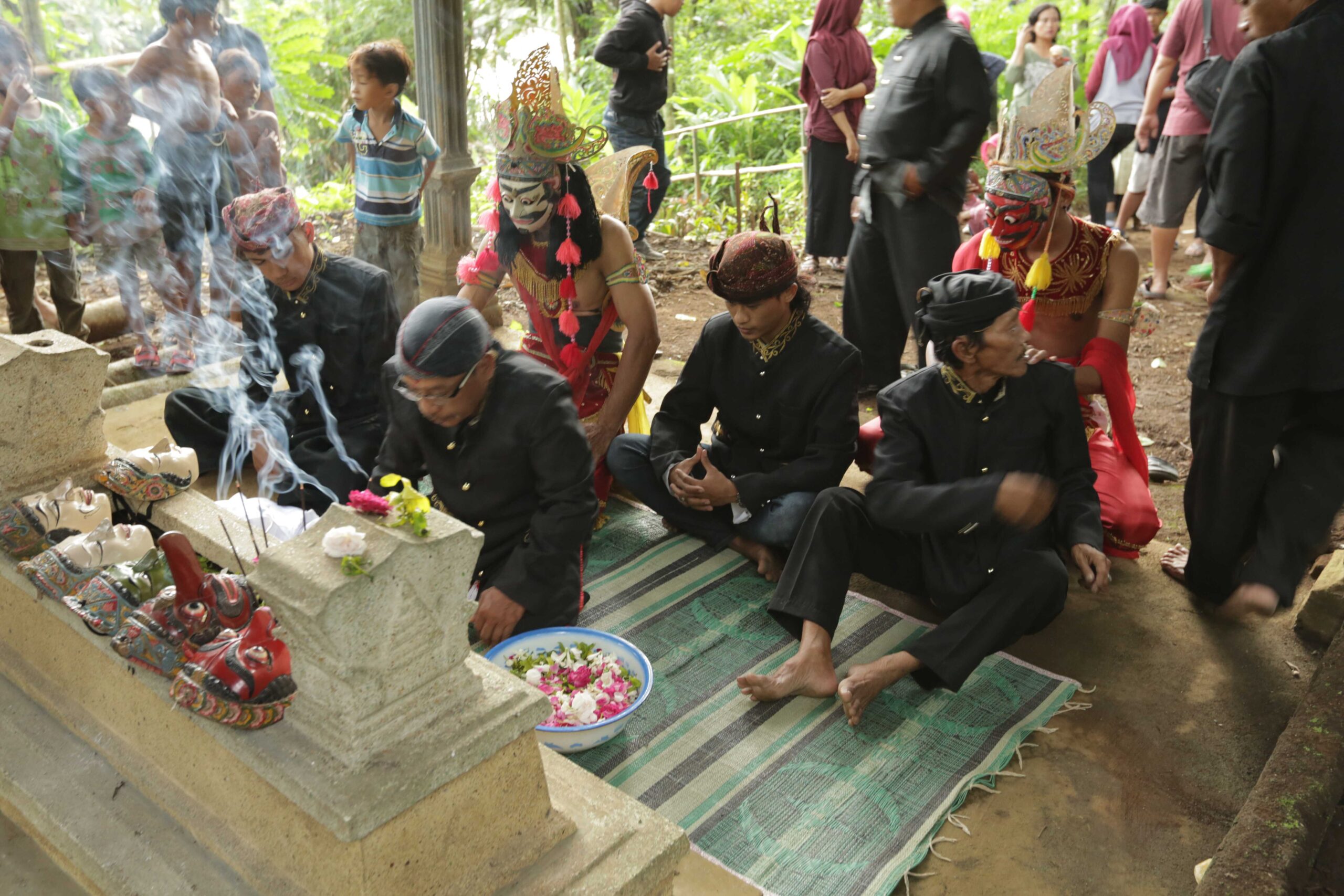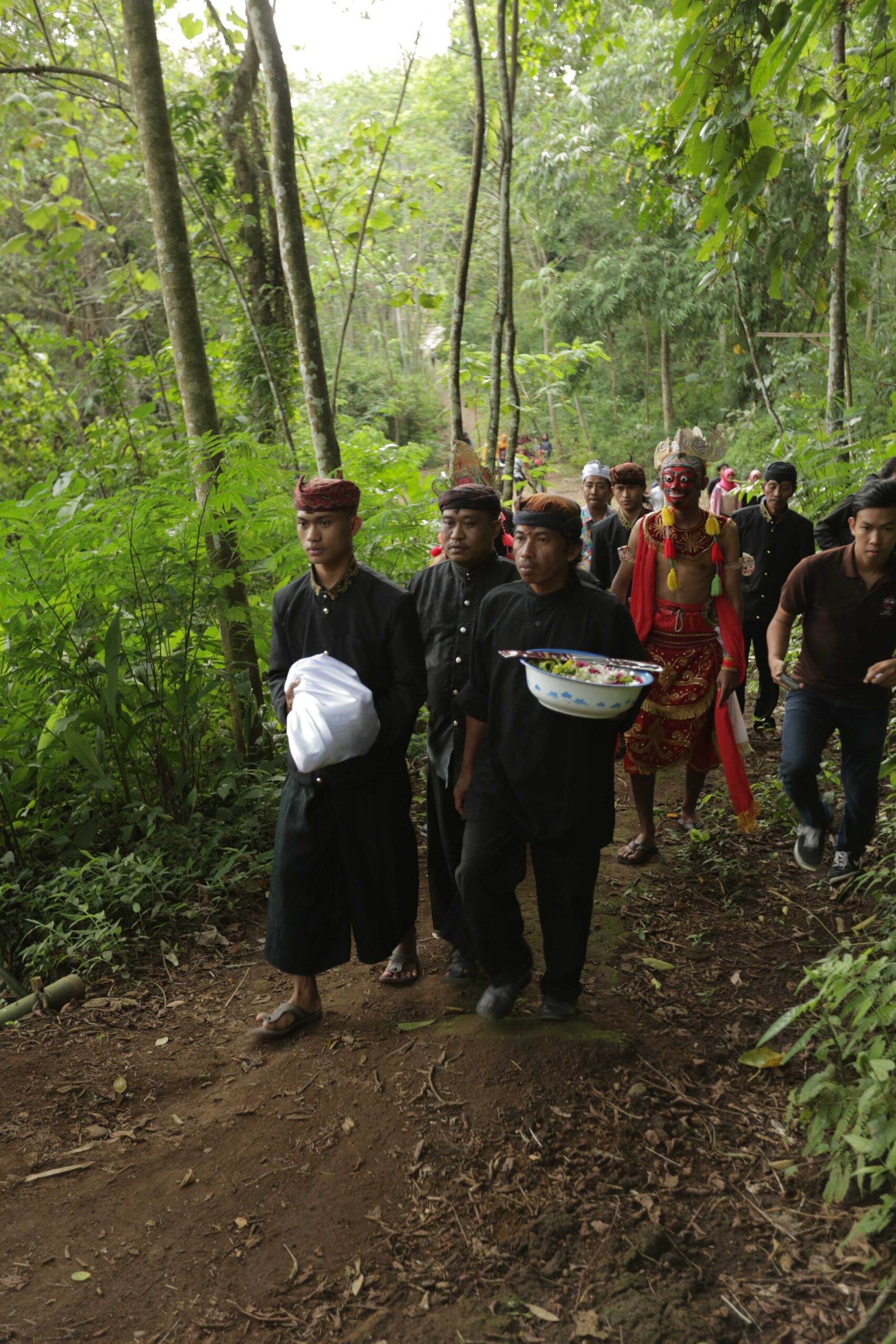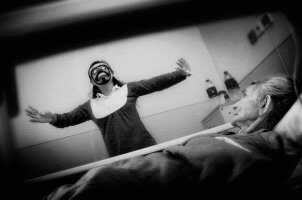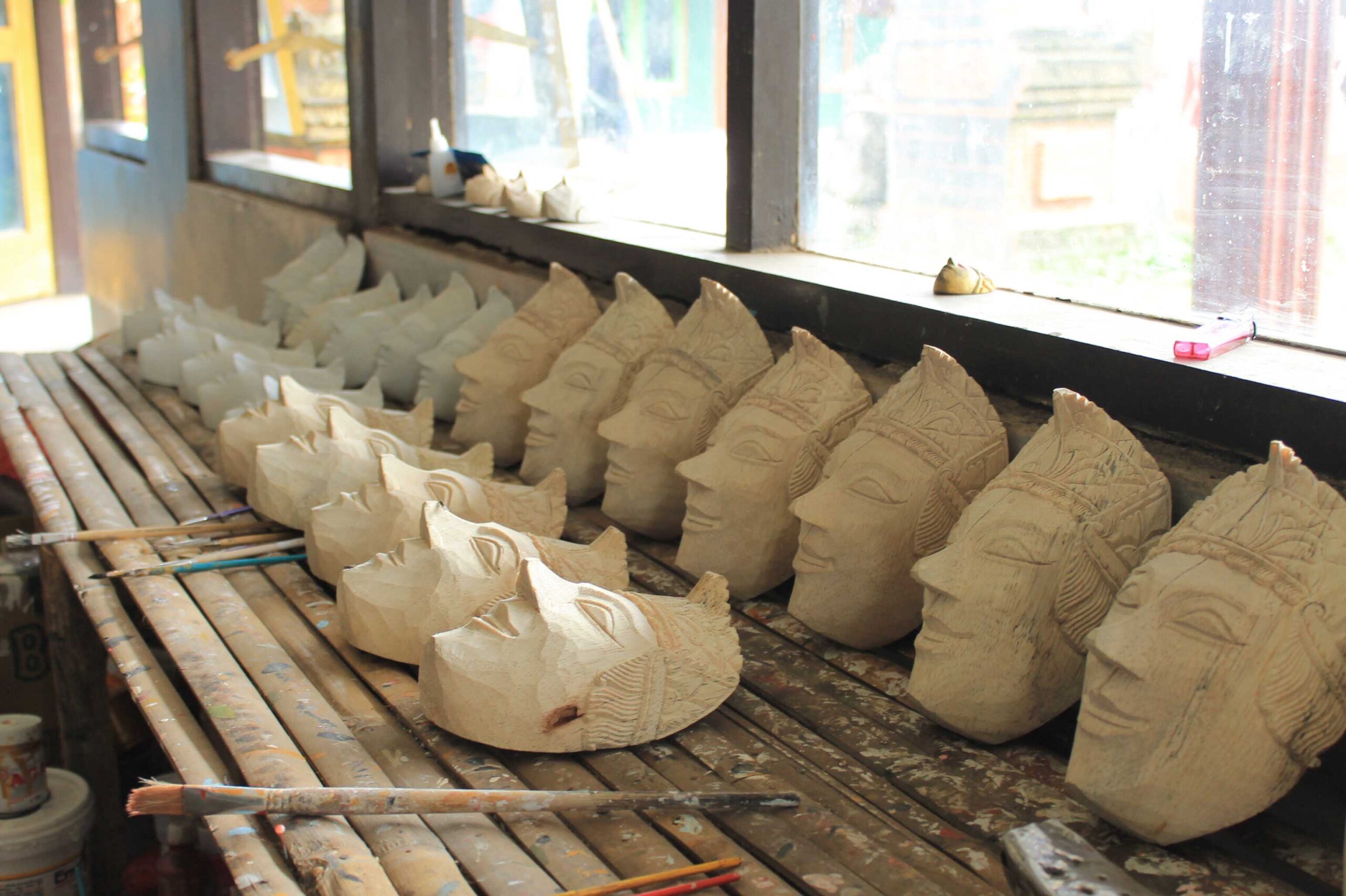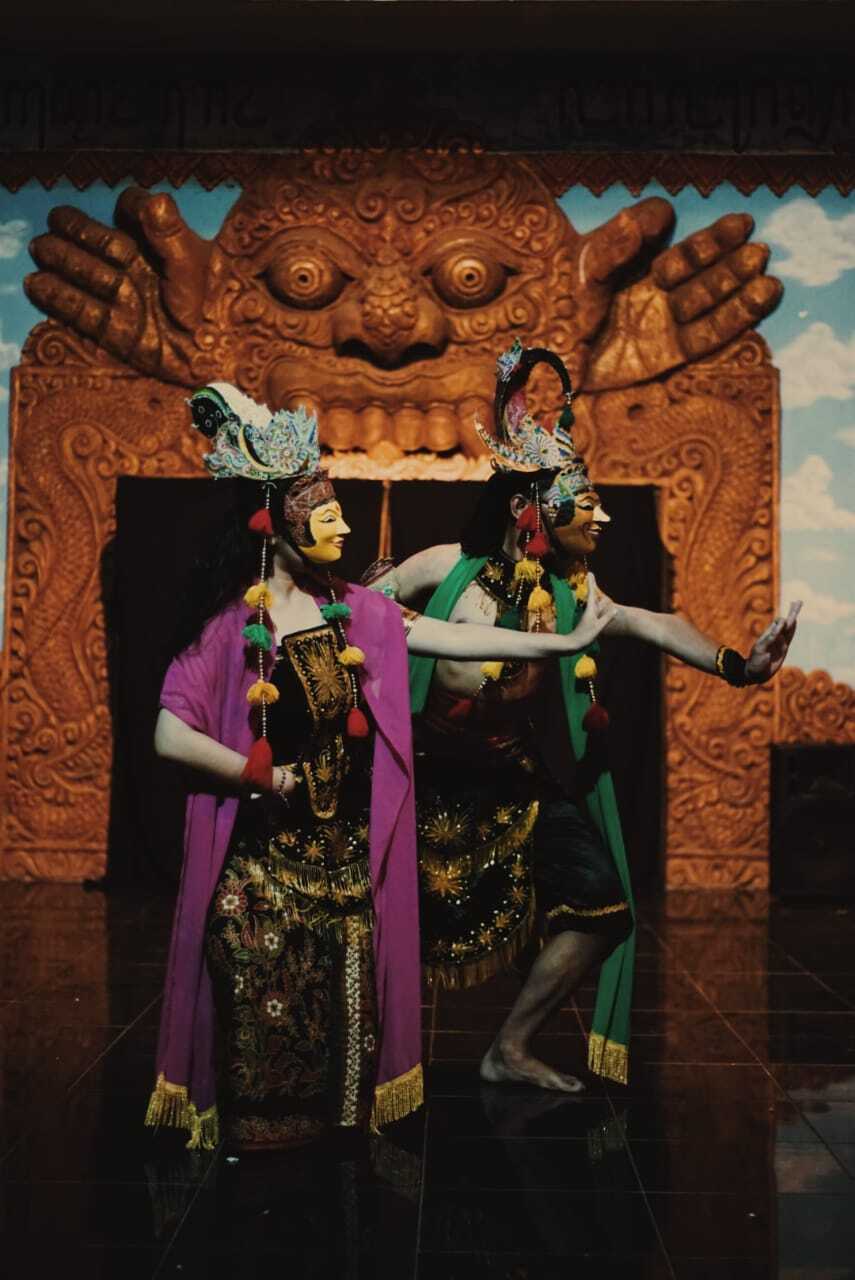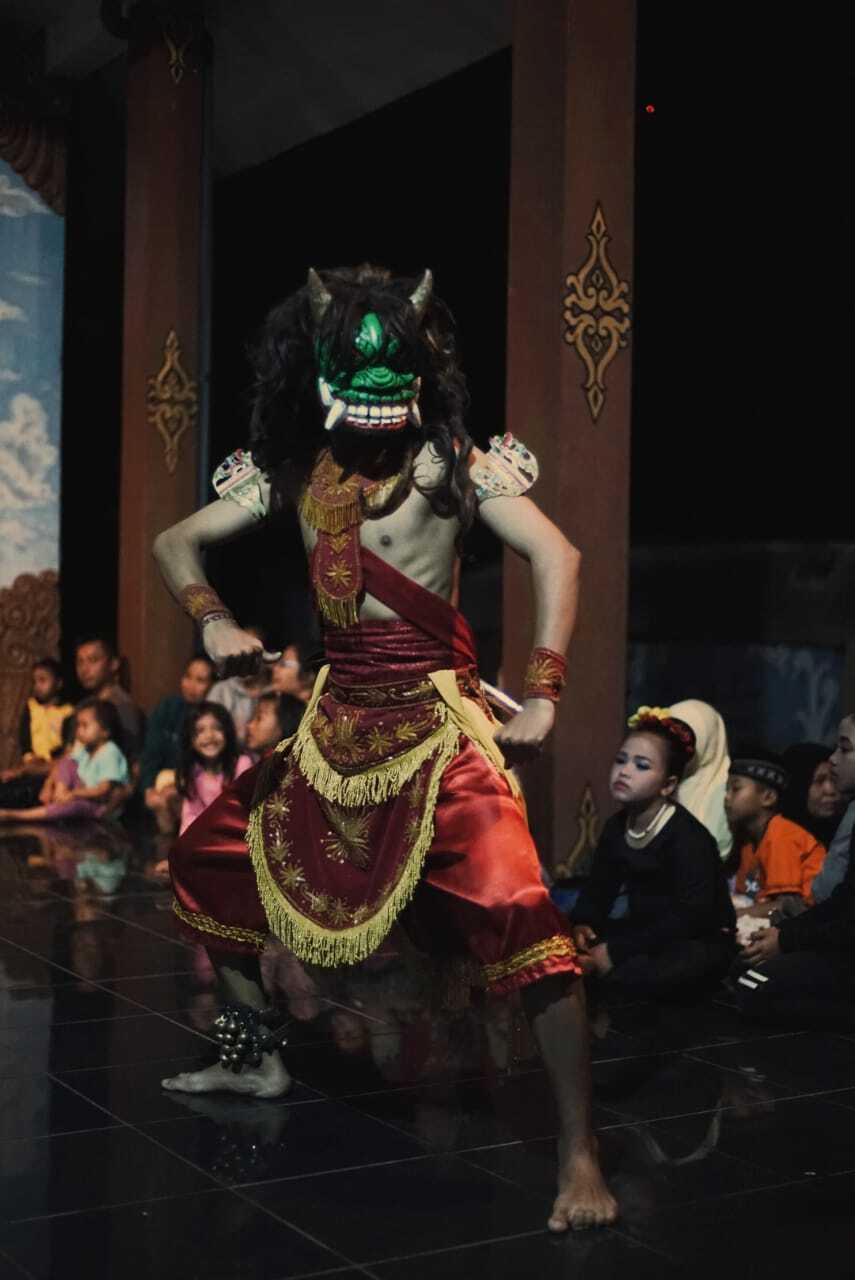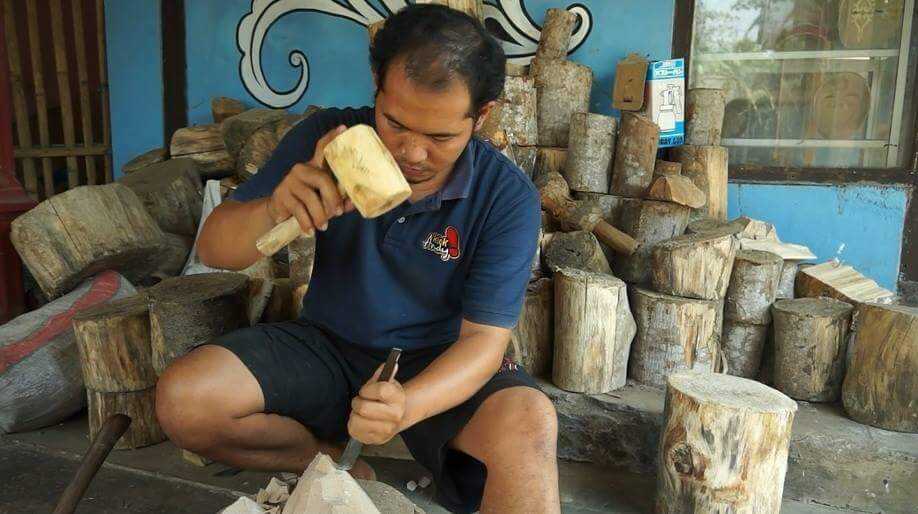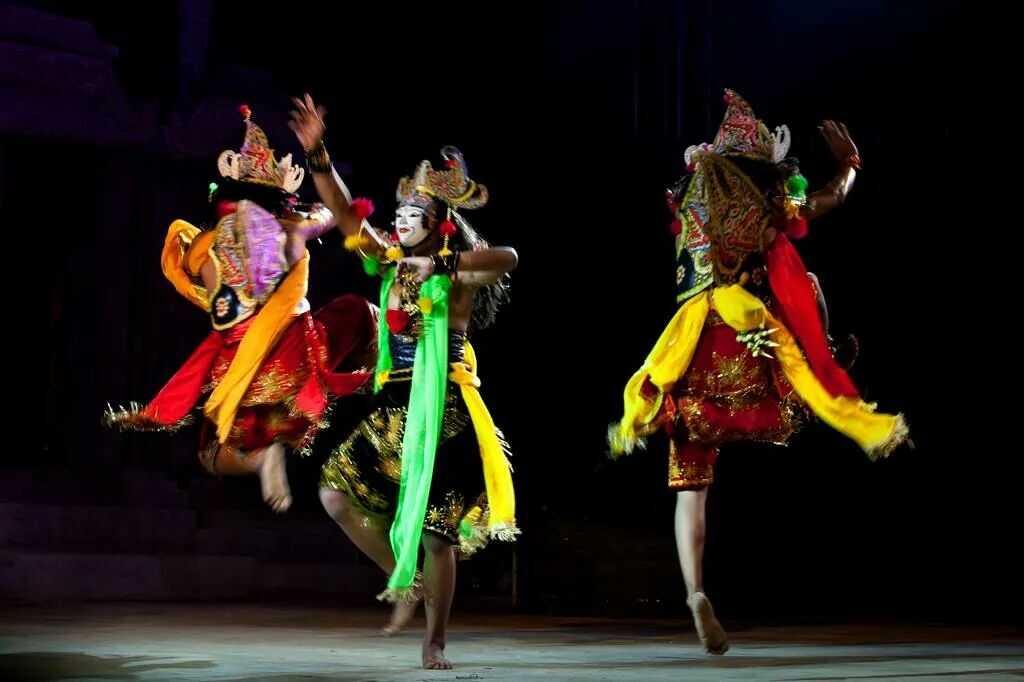
The Javanese mask, inspired by the Panji story, is one of many mask traditions in the Indonesian archipelago. It began in East Java and spread across the region.
In three Javanese villages—Kedungmonggo in Malang, Bantul in Yogyakarta, and Pekandangan in Indramayu—the tradition of mask dance thrives, each with its own distinct style. Rooted in the Panji story, these Javanese masks represent one of many rich mask traditions across the Indonesian archipelago. Originating in East Java, the Panji narrative spread widely, becoming a core theme in traditional performances.

Central narrative of Javanese mask tradition; originated in East Java, spread across the archipelago.
Indonesia’s mask tradition dates back to prehistoric times, with gold masks and motifs found on artifacts at sites like Pasir Angin (circa 1000 BCE). Burial masks have also been uncovered in Gilimanuk, Makassar, East Java, and Central Sulawesi. Known as Tapel, Raket, or Topen, these masks appear in ancient texts such as Arjuna Wiwaha and Kakawin Negarakertagama (1365 CE), highlighting their cultural importance.
References to topeng appear in ancient texts like Arjuna Wiwaha, Negarakertagama, and others, showcasing its integral place in Javanese culture.
This story highlights three distinct regional mask traditions, each rooted in a different part of Java.
The story begins at Padepokan Asmarabangun in Kedungmonggo Village, Malang—a dance studio and mask-making home industry that has been passed down through generations. It all started with Mr. Karimun, better known as Mbah Mun, who passed on the dance choreography and mask-making techniques to his grandson, Handoyo, the fifth generation bearer of the Malangan mask tradition.


The art of mask-making in Kedungmonggo dates back to around 1900, beginning with Mbah Mun’s grandfather, Mbah Serun. Mbah Serun learned from Mr. Gunawan of Mbanglan, Kromengan, near Mount Kawi. Initially, this mask art was known as Pendowo Limo, inspired by the Purwa story from the Ramayana Mahabharata.
Mbah Serun passed the tradition to his son, Kiman, also known as Mbah Tahyo, who then passed it to Mbah Karimun. Times were challenging during Mbah Karimun’s era, spanning the colonial period from 1945 to 1965. Starting in 1965, he was forced to pause the art for several years due to the G30S/PKI movement, which banned all forms of artistic expression. Gradually, with the help of his son Taslan Harsono, Mbah Karimun was able to revive the art form.
Handoyo, the grandson, recalls the old tradition when villages celebrated panen raya (the grand harvest) with performances during the harvest season. In the 1970s, demand for masks began to rise again, and in 1978, the Kedungmonggo wayang topeng (mask puppet) troupe was selected to represent East Java at a festival in Jakarta. They stayed in Jakarta for a month, and upon their return, they began receiving government attention, which led to the establishment of Padepokan Asmarabangun.
Handoyo’s father, Mr. Taslan, passed away in 1992, when Handoyo was only in his second year of junior high. Mask-making was his father’s sole source of income, and his mother told him, “Son, we have mask orders. If we don’t make them, we won’t have any money.” That moment marked Handoyo’s first experience learning to make masks, while also learning to dance.
At first, Handoyo was reluctant, but he continued learning under Mbah Mun’s guidance. In 1996, Mbah Mun suffered an accident that broke both his legs, and Handoyo had to step up to keep the art alive. Receiving mask orders pushed him to learn how to organize performances, always under his grandfather’s mentorship. This is how he honed his skills. Stylistically, Mbah Mun’s masks are known for their stern and rough character—even his Panji masks bear a strong edge—which Handoyo believes reflects his grandfather’s Madurese heritage.
Handoyo still keeps a few of Mbah Mun’s masks, along with some made by his father. Their unwavering dedication to this art inspires him to continue, even though there are fewer fans today. He witnessed their commitment to the craft, regardless of whether they had food on the table or not, and now feels a deep responsibility to carry on the tradition.
In other areas, such as Malang city, the dance movements are smoother, with hands and legs lifted slowly to avoid any broken or harsh motions. In Kedungmonggo, however, dancers are taught to raise their hands sharply up to their armpits.
Mbah Mun always emphasized that Kedungmonggo’s Topeng Malang is an art form defined by strong, broken movements. He also taught specific hand gestures, like the gentle movements for the Panji character, the Supit Urang Tertutup (closed shrimp claw) gesture for the Sabrang and Satria characters, and the dramatic Boyo Mangap (gaping crocodile) gesture reserved for king characters such as Klono.



